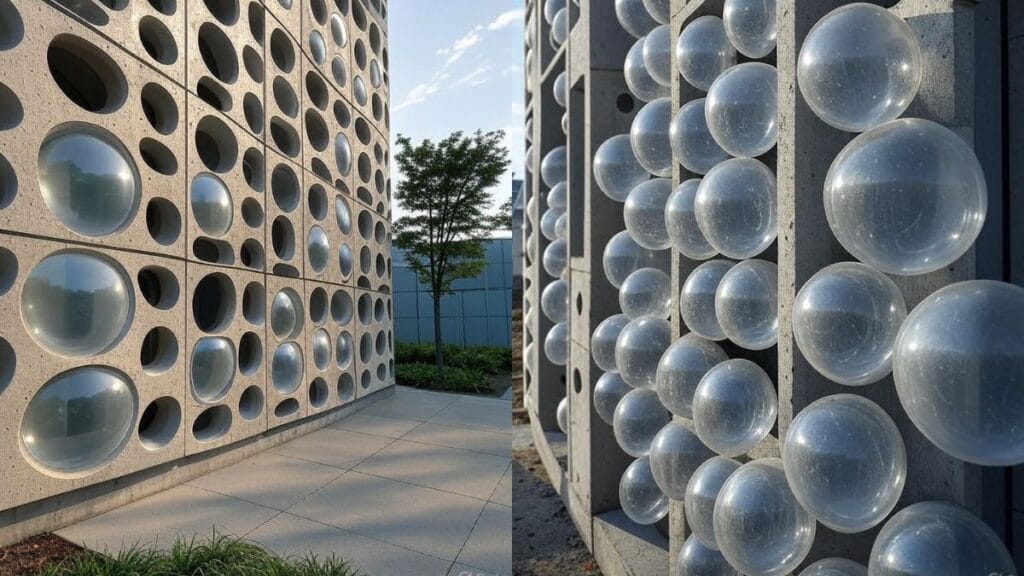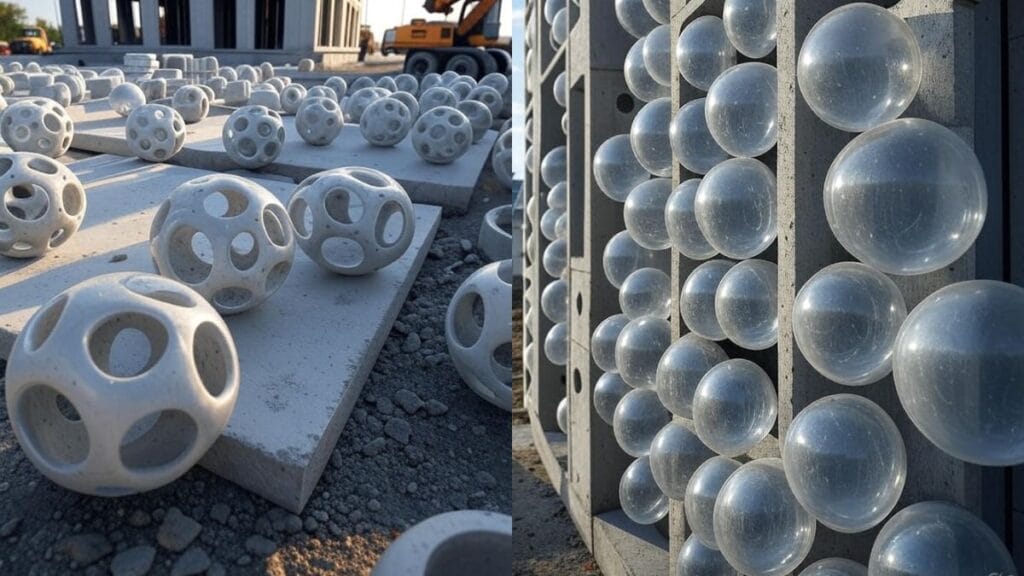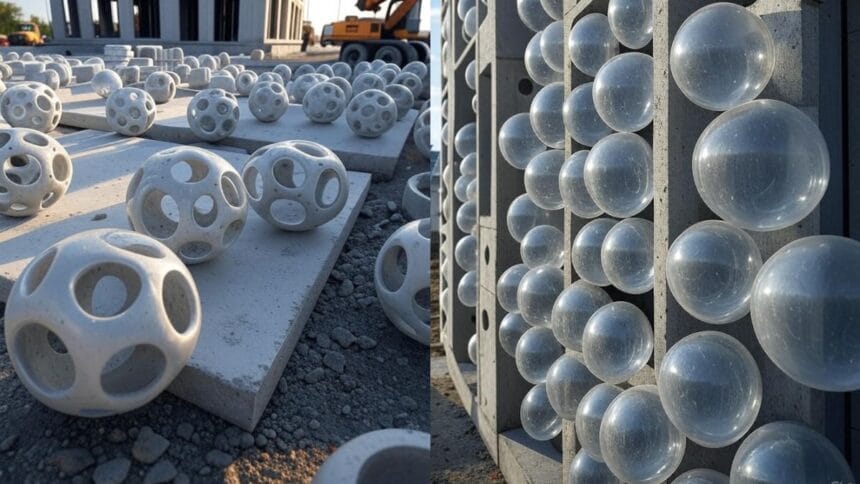Have you ever wondered how we can build taller, stronger structures while using less material and cutting down on environmental impact? Enter BubbleDeck Technology, a game-changer in the world of concrete construction. This innovative approach isn’t just about slapping together slabs—it’s a smart way to make buildings lighter, more efficient, and eco-friendlier.
If you’re in the construction industry or just curious about modern engineering marvels, stick around. We’ll dive into what BubbleDeck Technology really is, how it works, and why it’s poised to transform the way we build.
At its core, BubbleDeck Technology involves embedding hollow plastic spheres—think recycled plastic bubbles—into concrete slabs. These bubbles replace chunks of concrete that don’t contribute much to the structure’s strength, specifically in the neutral axis where tension and compression forces balance out.
The result? A lighter slab that performs just as well as a traditional solid one, but with up to 50% less concrete. Developed in Denmark back in the 1990s, this method has spread globally, earning patents and praise for its ingenuity. It’s like giving your building a diet without losing muscle—smart, right?

The Origins and Evolution of BubbleDeck Technology
BubbleDeck Technology didn’t pop up overnight. It all started with Jørgen Breuning, a Danish engineer who saw the waste in conventional concrete slabs. In the early ’90s, he experimented with ways to void out unnecessary concrete, inspired by nature’s efficient designs like honeycombs or bird bones. By 1993, the first prototypes were tested, and BubbleDeck International A/S was born to commercialize it.
Fast forward to today, and this tech has evolved into a patented system used in everything from high-rises to bridges. Companies like BubbleDeck North America have adapted it for local markets, ensuring it meets stringent building codes.
What makes it stand out is its focus on sustainability—those plastic spheres are often made from recycled materials, turning waste into a building hero. Over the years, research from places like Purdue University and MIT has validated its structural integrity, showing it’s not just hype but a proven performer.
Breaking Down How BubbleDeck Technology Works
So, how does this bubble magic actually happen? Picture a concrete slab sandwich. In a standard setup, you have steel reinforcement bars (rebar) running through a thick layer of concrete. BubbleDeck flips the script by placing hollow HDPE (high-density polyethylene) spheres between the rebar layers. These spheres, about the size of soccer balls, create voids that lighten the load.
The process starts in a factory: Precast elements with the bubbles locked in place by a lattice of steel. On-site, these panels are assembled, and fresh concrete is poured over them, bonding everything into a monolithic slab.
It’s biaxial, meaning it handles forces in two directions equally well, just like a solid slab but with less weight. The key is the arch action—the bubbles provide strength by distributing loads efficiently, similar to how an egg’s shell is strong despite being thin.
Videos and demos show this in action: Workers place the bubbles, pour the concrete, and voila—a slab that’s 30-50% lighter. No fancy tools needed beyond standard construction gear. And get this: It reduces vibrations and improves acoustics, making buildings quieter too.
The Game-Changing Benefits of BubbleDeck Technology
Why bother with bubbles when traditional concrete has worked for decades? The perks are hard to ignore. First off, material savings are huge. By ditching deadweight concrete, you cut usage by up to half, slashing costs and carbon emissions. Concrete production is a major CO2 culprit, so this tech helps fight climate change—one slab at a time.
Here’s a quick rundown of the top benefits:
- Weight Reduction: Lighter slabs mean slimmer columns and foundations, allowing for longer spans—up to 50% more than standard designs. Perfect for open-floor plans in offices or malls.
- Cost Efficiency: Less material equals lower transport and labor costs. Projects finish faster, sometimes shaving weeks off timelines.
- Eco-Friendly Edge: Recycled plastic bubbles reduce plastic waste, and less concrete means fewer quarries dug up. It’s a win for biodiversity and forests.
- Structural Smarts: Enhanced fire resistance (bubbles don’t burn easily), better seismic performance, and easier integration of utilities like wiring.
- Durability Boost: Tests show these slabs last as long as solid ones, with no cracking issues if installed right.
Users on forums like Reddit rave about it for hybrid projects, where it combines with other tech for even bigger spans. Imagine building a stadium with fewer supports—more seats, better views!

Real-World Applications and Success Stories
BubbleDeck Technology isn’t theoretical—it’s out there shaping skylines. In Europe, it’s been used in iconic spots like the Millennium Tower in Rotterdam, where lighter floors allowed for a sleeker design. Closer to home, North American projects include hospitals and schools, where reduced weight eases foundation stress on soft soil.
Take the case of a Danish office building: Using BubbleDeck cut concrete by 35%, saved 20% on costs, and earned green certifications. In Asia, it’s popping up in high-rises to combat urban density. Even bridges benefit, with lighter decks spanning wider rivers without extra pillars.
Challenges? Some engineers worry about long-term bubble integrity, but decades of use show they’re tough. Adoption is growing, especially with sustainability mandates.
Looking Ahead: The Future of BubbleDeck Technology
As we push for greener builds, BubbleDeck is set to soar. Innovations like smarter bubble materials or AI-optimized designs could make it even better. With global construction booming, this tech could cut billions in emissions.
But it’s not without hurdles—regulatory approvals vary by region, and upfront training is needed. Still, the buzz is real; experts predict it’ll become standard in eco-conscious projects.
Wrapping It Up: Why BubbleDeck Technology Matters Now
In a world racing toward sustainable living, BubbleDeck Technology stands out as a practical hero. It’s not just about bubbles—it’s about building smarter, saving resources, and creating spaces that last.
If you’re planning a project, consider this tech; it might just bubble up your efficiency. What do you think—ready to pop the old ways? Share your thoughts below and let’s discuss how innovations like this are reshaping our world.
Read More: The Future of Smart Speed Bump
Read More: High-Performance Concrete Build Business Case Value
